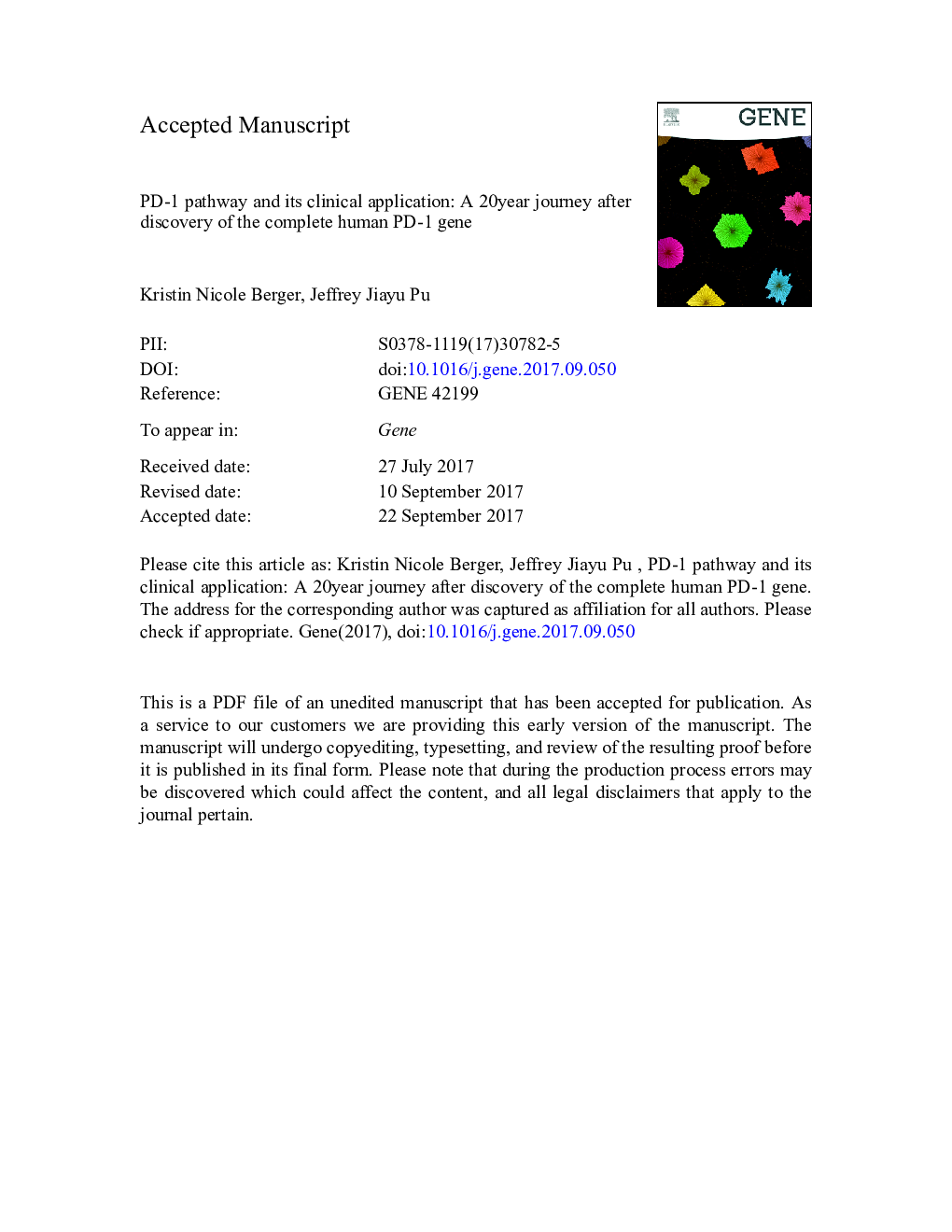| Article ID | Journal | Published Year | Pages | File Type |
|---|---|---|---|---|
| 5589300 | Gene | 2018 | 19 Pages |
Abstract
Anti-PD-1 therapy is a novel immune-checkpoint inhibition therapy with tremendous potential in treating refractory/relapsed cancers. The 20Â year journey of human PD-1 research went through 3 phases: 1) discovering PD-1 gene structure and genomic organization, 2) understanding the mechanism of PD-1 mediated immune-checkpoint regulatory effects in coordination with its ligands (PD-L1 and L2), 3) and translating our knowledge of PD-1 gene into a robust clinical anticancer approach by targeting the PD-1 immune-checkpoint pathway. The success of human PD-1 gene study reflects the advancement and trends of modern biomedical research from the laboratory to the bedside. However, our journey of understanding the PD-1 gene is not yet complete. Clinical investigation data show a high variety of response rates among different types of cancers to PD-1 immune-checkpoint inhibition therapy, with a range of 18% to 87%. There is no reliable biomarker to predict an individual patient's response to PD-1 inhibitory immunotherapy. Patients can present with primary, adaptive, or even acquired resistance to PD-1 immune-checkpoint inhibition therapy. Furthermore, the emerging data demonstrates that certain patients experience hyperprogressive disease status after receiving PD-1 immune-checkpoint inhibition therapy. In conclusion, PD-1 immune-checkpoint inhibition therapy has opened up a new venue of advanced cancer immunotherapy. Meanwhile, further efforts are still warranted in both basic scientific mechanism studies and clinical investigation using the principles of personalized and precision medicine.
Keywords
Related Topics
Life Sciences
Biochemistry, Genetics and Molecular Biology
Genetics
Authors
Kristin Nicole Berger, Jeffrey Jiayu Pu,
